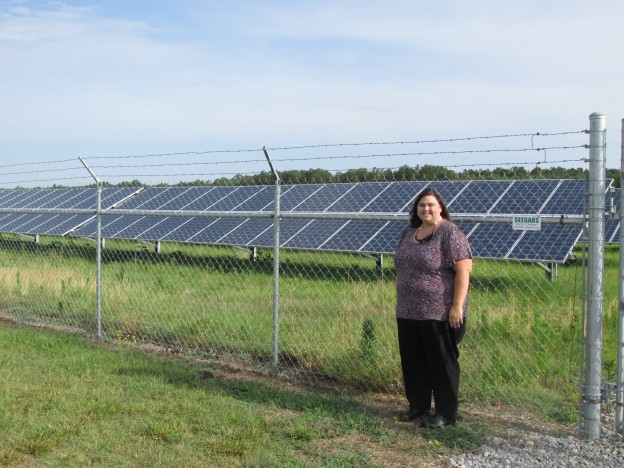On Thursday, June 18 i visited the QVC facility in Rocky Mount, NC. I was absolutely blown away by the facilities at QVC. The technology that goes into receiving, storing, and processing material is unfathomable for anyone who hasn’t see it first hand. QVC was a planned part of my Kenan experience because they are industrial members of Edgecombe-Martin Electric Membership Cooperative. They are a unique facility in terms of electricity production and consumption because they have a larg solar farm on-site that provides 5.8 million kilowatt hours of electricity per year that is put back on the grid and purchased by North Carolina Electric Membership Cooperative. Read my post about solar energy here.

Packages are sorted into bins according to destination
Since QVC’s equipment, methods, and materials are essentially ‘trade secret’, I couldn’t take any pictures of the inside. But I can summarize the steps, from bulk order in to individual order out:
1. A truck brings pallets of product to the facility. It is unloaded, sorted, and then stored in a specific location.
2. Once an order is placed for an item, the item is pulled from storage and sent to packaging. Keep this in mind the next time you order multiple types of items from any store– the items are likely stored in various storage areas, but somehow they all make into the same box. AMAZING!
3. The items are packaged. This may seem like a small detail, but you want that TV to receive in working order, right? How about the pearl bracelet you ordered? That should be handled carefully too, right? While they probably would not package a TV and pearl bracelet together, they combine as much as they can in order to keep consumer shipping costs down.
4. Once your order is packaged, it is sent on a conveyor belt where it is scanned and sorted according to region of destination, and then loaded onto a truck that will be used to transport your item to USPS or UPS or FedEx.
Its important to note that this process is heavily automated, it requires many people to monitor, package, transport via forklifts, and troubleshoot the system. It was very interesting to see how all of the machines worked together to deliver a fast and timely produce. Every hour costs the company lots of money– the higher the productivity, the higher the costs.
As I toured the facility I couldn’t help but compare the business world to the education world. In a sense, education is a business– however too often inefficiency is rampant and the result ends up being a product (student) that is not ready for what lies ahead. I know there are many great schools doing many great things, and they should be the model we look to for insight and guidance. What kind of product are we sending out to the world? What would our ‘bottom line’ actually be if we could attach numbers to productivity, creativity, and efficiency?




